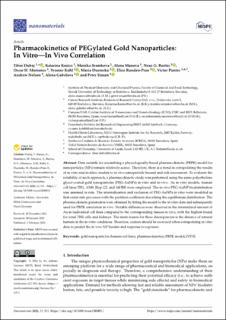| dc.contributor.author | Dubaj, Tibor | |
| dc.contributor.author | Kozics, Katarina | |
| dc.contributor.author | Srámková, Monika | |
| dc.contributor.author | Manova, Alena | |
| dc.contributor.author | Bastus, Neus G. | |
| dc.contributor.author | Moriones, Oscar H. | |
| dc.contributor.author | Kohl, Yvonne | |
| dc.contributor.author | Dusinska, Maria | |
| dc.contributor.author | Rundén-Pran, Elise | |
| dc.contributor.author | Puntes, Victor | |
| dc.contributor.author | Nelson, Andrew | |
| dc.contributor.author | Gábelová, Alena | |
| dc.contributor.author | Simon, Peter | |
| dc.date.accessioned | 2022-02-24T07:52:50Z | |
| dc.date.available | 2022-02-24T07:52:50Z | |
| dc.date.created | 2022-02-10T12:18:58Z | |
| dc.date.issued | 2022 | |
| dc.identifier.citation | Nanomaterials. 2022, 12, 511. | en_US |
| dc.identifier.issn | 2079-4991 | |
| dc.identifier.uri | https://hdl.handle.net/11250/2981110 | |
| dc.description.abstract | Data suitable for assembling a physiologically-based pharmacokinetic (PBPK) model for nanoparticles (NPs) remain relatively scarce. Therefore, there is a trend in extrapolating the results of in vitro and in silico studies to in vivo nanoparticle hazard and risk assessment. To evaluate the reliability of such approach, a pharmacokinetic study was performed using the same polyethylene glycol-coated gold nanoparticles (PEG-AuNPs) in vitro and in vivo. As in vitro models, human cell lines TH1, A549, Hep G2, and 16HBE were employed. The in vivo PEG-AuNP biodistribution was assessed in rats. The internalization and exclusion of PEG-AuNPs in vitro were modeled as first-order rate processes with the partition coefficient describing the equilibrium distribution. The pharmacokinetic parameters were obtained by fitting the model to the in vitro data and subsequently used for PBPK simulation in vivo. Notable differences were observed in the internalized amount of Au in individual cell lines compared to the corresponding tissues in vivo, with the highest found for renal TH1 cells and kidneys. The main reason for these discrepancies is the absence of natural barriers in the in vitro conditions. Therefore, caution should be exercised when extrapolating in vitro data to predict the in vivo NP burden and response to exposure. | en_US |
| dc.language.iso | eng | en_US |
| dc.rights | Navngivelse 4.0 Internasjonal | * |
| dc.rights.uri | http://creativecommons.org/licenses/by/4.0/deed.no | * |
| dc.title | Pharmacokinetics of PEGylated Gold Nanoparticles: In Vitro—In Vivo Correlation | en_US |
| dc.type | Peer reviewed | en_US |
| dc.type | Journal article | en_US |
| dc.description.version | publishedVersion | en_US |
| dc.rights.holder | © 2022 by the authors. Licensee MDPI, Basel, Switzerland. | en_US |
| dc.source.pagenumber | 12 | en_US |
| dc.source.volume | 12 | en_US |
| dc.source.journal | Nanomaterials | en_US |
| dc.identifier.doi | 10.3390/nano12030511 | |
| dc.identifier.cristin | 1999923 | |
| dc.relation.project | EC/H2020/685817 | en_US |
| dc.relation.project | EC/H2020/857381 | en_US |
| dc.relation.project | NILU - Norsk institutt for luftforskning: 119125 | en_US |
| dc.relation.project | NILU - Norsk institutt for luftforskning: 116073 | en_US |
| dc.source.articlenumber | 511 | en_US |
| cristin.ispublished | true | |
| cristin.fulltext | original | |
| cristin.qualitycode | 1 | |

